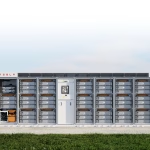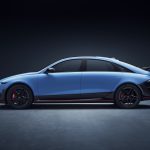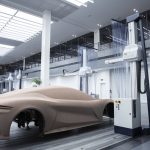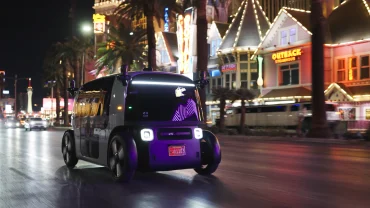
- Autonomous Vehicles
- Big Tech
- Electric Vehicles
- Mobility Tech
Tesla’s Affordable Models See Higher Costs After Tax Credit Ends
5 minute read

Federal Tax Credit Expiration Pushes Tesla Model Y and Model 3 Prices Higher as Stripped-Down Versions Hit US Market
Key Takeaways
- Tesla’s newly launched “affordable” Model Y and Model 3 variants start at $41,630 and $38,630 respectively, including destination fees—effectively costing buyers $2,000 or more than anticipated after the abrupt September 30, 2025 expiration of the $7,500 federal EV tax credit.
- Despite record Q3 2025 deliveries of over 497,000 vehicles globally—including 481,166 Model 3 and Y units—the US market reception has been lukewarm, with analysts warning of potential profit margin erosion from these lower-cost, feature-light models.
- Full Self-Driving capabilities now require an $8,000 upfront payment or $99 monthly subscription, while base models eliminate standard Autosteer and premium features including ambient lighting, heated rear seats, and upgraded audio systems.
Introduction
Tesla is facing a reckoning in the US market. The company’s long-awaited “more affordable” Model Y and Model 3 variants—stripped-down versions of its bestsellers—have landed with a thud among consumers and Wall Street analysts. What Tesla positioned as a breakthrough in EV accessibility has instead exposed a critical pricing miscalculation, made worse by the sudden elimination of the $7,500 federal tax credit that previously made these vehicles more attainable.
At $41,630 for the base Model Y Rear-Wheel Drive and $38,630 for the Model 3 Standard Rear-Wheel Drive (before taxes and fees), these entry-level models sit well above the sub-$35,000 price point many buyers expected after the tax credit. The premium alienates budget-conscious shoppers and weakens Tesla’s competitive position against challengers ranging from BYD’s aggressive pricing in Asia to Ford’s and GM’s revamped EV offerings domestically. Elon Musk’s mission to accelerate the world’s transition to sustainable energy now depends on whether Tesla can recalibrate its approach in an increasingly cutthroat market.
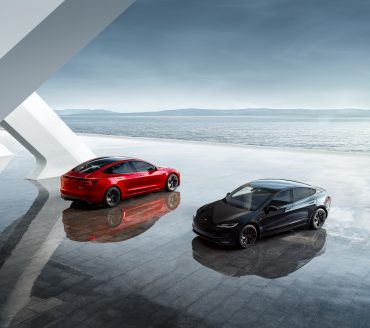
Key Developments
In a bid to slash production costs without overhauling its assembly lines, Tesla opted for incremental tweaks rather than revolutionary redesigns—echoing CEO Musk’s April 2025 earnings call tease of “refreshed” variants arriving in the second half of the year. The result? Base models that skimp on driver aids and creature comforts: Gone is the standard Autosteer, leaving only Traffic-Aware Cruise Control as the sole advanced feature. Customers eyeing Tesla’s vaunted FSD suite must now pony up $8,000 at purchase or opt into the $99/month FSD (Supervised) subscription, a move critics decry as nickel-and-diming loyalists.
Aesthetic and audio downgrades further dilute the appeal: The Model Y Standard forgoes front and rear light bars, ambient interior lighting, and a premium 14-speaker setup, settling for a basic seven-speaker system instead. Yet, silver linings persist—the 320-mile EPA-estimated range on a single charge remains a standout, outpacing many sub-$40,000 rivals. Tesla’s rationale? Streamlining for affordability in a high-interest-rate environment where consumers prioritize value over bells and whistles.
Market Impact
Tesla’s Q3 2025 performance—delivering over 497,000 vehicles, a 6% year-over-year increase—masks growing US headwinds. Of that total, 481,166 were Model 3 and Y units, demonstrating their continued dominance while highlighting vulnerability as average selling prices drift toward $40,000 with the influx of bare-bones editions. Wall Street responded with a 3% stock decline following the announcement, with firms like Future Fund cautioning that cannibalization of higher-margin trims could push gross margins below 18%—down from 2024’s 19.8% peak.
The outlook is sobering: US EV sales could stall at 1.2 million units for 2025 unless Tesla introduces aggressive leasing programs, potentially bundling FSD trials to narrow the perceived value gap. Globally, the tax credit’s elimination creates ripple effects, though Tesla’s inventory of pre-October 1 orders—still eligible for the incentive—provides temporary relief, with over 50,000 units scheduled for Q4 delivery under the previous rules.
Strategic Insights
Tesla’s approach differs sharply across regions, revealing an agile but inconsistent global strategy. In Europe, the Standard Model Y launch has gained traction, debuting at €39,990—€5,000 to €10,000 below premium versions, despite a 16% range reduction to 455 km (WLTP). This pricing advantage, unaffected by US-style tax credit disruptions, has generated pre-orders in Germany and Sweden, where it undercuts Volkswagen’s ID.4 by 15%.
China tells a different story. September 2025 sales of China-made Tesla EVs rose 2.8% year-over-year to 90,812 units, driven by the refreshed six-seat Model Y Long Range and stabilizing trade-in subsidies. Retail figures reached 71,525 vehicles, the second-strongest monthly performance of the year, setting Tesla up for 30% Q4 growth despite BYD’s market leadership. Here, Tesla’s competitive edge rests on software capabilities and Supercharger network density, allowing premium pricing even in cost-sensitive markets.
This fragmented strategy reflects a broader industry shift: from Tesla’s early days of disruptive innovation to today’s reality of cost optimization and regional adaptation. As Musk pivots toward AI and robotics—demonstrated by the Optimus robot unveiling at the October 2025 “We, Robot” event—Tesla must balance affordability with its technological advantages to compete against Huawei’s Aito and Xiaomi’s SU7.
Expert Opinions and Data
“Tesla’s stripped-down approach feels incomplete in a highly competitive race,” says Electrek’s Fred Lambert, noting the “reduced excitement factor” compared to the 2017 Model 3 launch. Barclays analyst Dan Levy agrees, attributing US demand weakness to “execution shortfalls” in feature offerings, with surveys showing 62% of prospective buyers resistant to the FSD paywall.
Yet operational strengths persist: Tesla’s Fremont and Texas Gigafactories produced 447,000 vehicles in Q3, demonstrating supply chain effectiveness. Industry speculation about 2026 improvements—including lithium-iron-phosphate batteries for sub-$30,000 trims or sodium-ion technology for colder climates—could regenerate interest, particularly if Federal Reserve rate cuts ease financing constraints. Diversification into energy storage, with 12.5 GWh deployed in Q3, further strengthens the balance sheet, providing insulation against automotive market volatility.
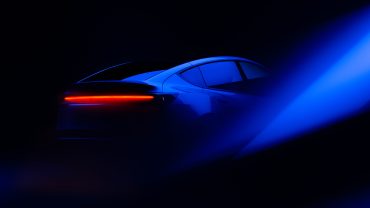
Conclusion
The US launch of Tesla’s reduced-feature Model Y and Model 3 represents a cautionary moment in the EV market’s evolution: cost reduction alone cannot compensate when incentives disappear and competition intensifies. Record deliveries confirm Tesla’s manufacturing capabilities, but the pricing misstep—amplified by the tax credit’s expiration—reveals weaknesses in its consumer strategy.
To maintain its leadership position, Tesla must combine efficiency with innovation—potentially through FSD breakthroughs like unsupervised autonomy or Cybercab robotaxis by 2026. As the market transitions from speculation to intense competition, Musk’s company faces its most significant challenge: sustain innovation momentum or risk becoming another conventional automaker. With ambitions spanning AI development and energy infrastructure, Tesla’s future remains compelling—if it can deliver on both promise and execution.
